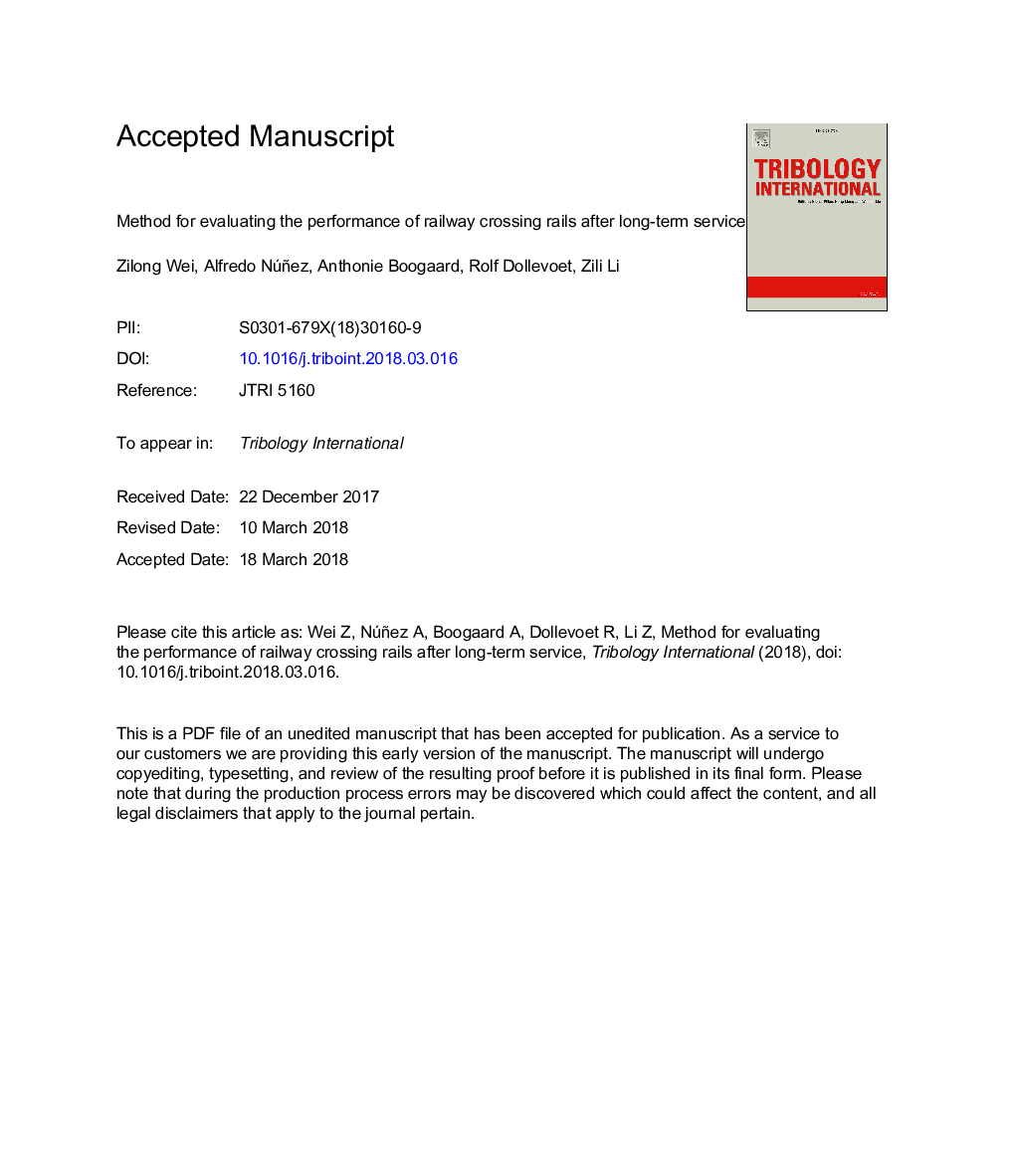| Article ID | Journal | Published Year | Pages | File Type |
|---|---|---|---|---|
| 7001735 | Tribology International | 2018 | 29 Pages |
Abstract
In this paper, we present a method for evaluating the performance of railway crossing rails after long-term service. The method includes 1) 3D profile and hardness measurements; 2) finite element simulation of wheel/rail interaction; and 3) numerical prediction of rail degradation. We conducted a case study on a crossing that had been in service for several years. The results indicate that the crossing experienced a run-in process in the major traffic direction, manifested as a widening of the running band, an enlargement of the contact patch size, a decrease in contact stress and eventually a reduction in plastic deformation and wear. However, the wheel/rail interaction was exacerbated in the minor traffic direction which induced more severe plastic deformation and wear.
Related Topics
Physical Sciences and Engineering
Chemical Engineering
Colloid and Surface Chemistry
Authors
Zilong Wei, Alfredo Núñez, Anthonie Boogaard, Rolf Dollevoet, Zili Li,
